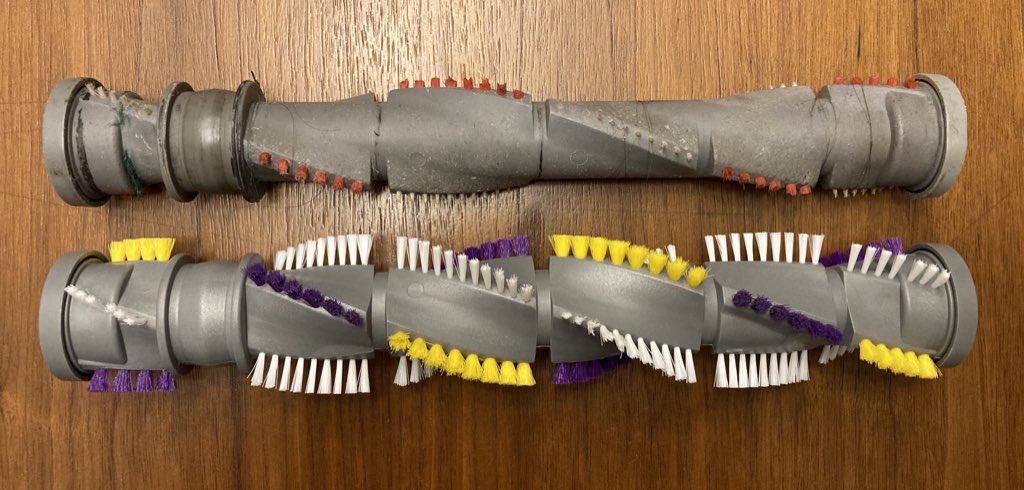My friend Thelma is my inspiration when it comes to home appliance repair: it’s because of Thelma—and because of DIY DNA inherited from my father—that I’m inclined to open things up and see what I can see before calling a repair person (or, horror, throwing something “perfect good” away and replacing it).
Last week I took apart the pedestal fan in our bedroom: it was turning on with the switch, but the motor was straining to rotate the blades. I carefully entered its inner world, discovering, in the process, that it is little more than a souped-up version of the simple motors that would appear in our public school classrooms from time to time, used by our teachers to illustrate the combination of electricity and magnetism.
I applied a few squirts of WD-40 to clean out the gunk, and then some 3-IN-ONE oil to keep things lubricated. I put things all back together and, presto, the fan works like it used to.
But this is a story about a vacuum cleaner, not a fan.
Lisa and I inherited a Bissell upright vacuum cleaner, a rather industrial-seeming, very well-used 2260 model. The vacuum worked “perfectly well,” except that its motorized rotating cylinder—the part with brushes that touches the rug and whips dirt into the suction—wasn’t turning properly.
Repair number one, earlier in the year, involved disassembly and the revelation that the cylinder wasn’t turning because the belt that drives it was broken. I replaced the belt for under $20 with a replacement from A-1 Vacuum.
The new belt lasted for about 10 minutes.
And then snapped again.
In my grief, I put the vacuum away in the closet for a few seasons.
A few weeks ago I took it out again—it’s sand-and-salt season and the rugs deserve more—and disassembled it again.
I realized that, yes, the belt was broken again. But also that the reason the belt was broken was because the aforementioned rotating cylinder was frozen in place. WD-40 came to the rescue again: a few squirts, some additional cleanup, and the cylinder was rotating again.
I put everything back together.
And found that the vacuum wasn’t doing a very good job, even with the rotating cylinder back on the job.
It was only then that I realized that perhaps the many years of hard use had worn down the rotating cylinder to the point where brushes that might once have been bushy were no longer so.
$29.95 and a week later, I had a new thingy in my hands.
Yes, the old one was worn down:

I installed the new brush in the vacuum in about 10 minutes.
And it’s like a whole new vacuum.
Not only does it clean the rugs like a dream, but it propels itself forward in a very pleasant way.
Thanks, Thelma.
 I am
I am
Comments
A tip of my duct-taped hat to
A tip of my duct-taped hat to you, Peter, that was a marvellous fix! I never knew those brushes could wear down so much.
Congrats!
Congrats!
Add new comment